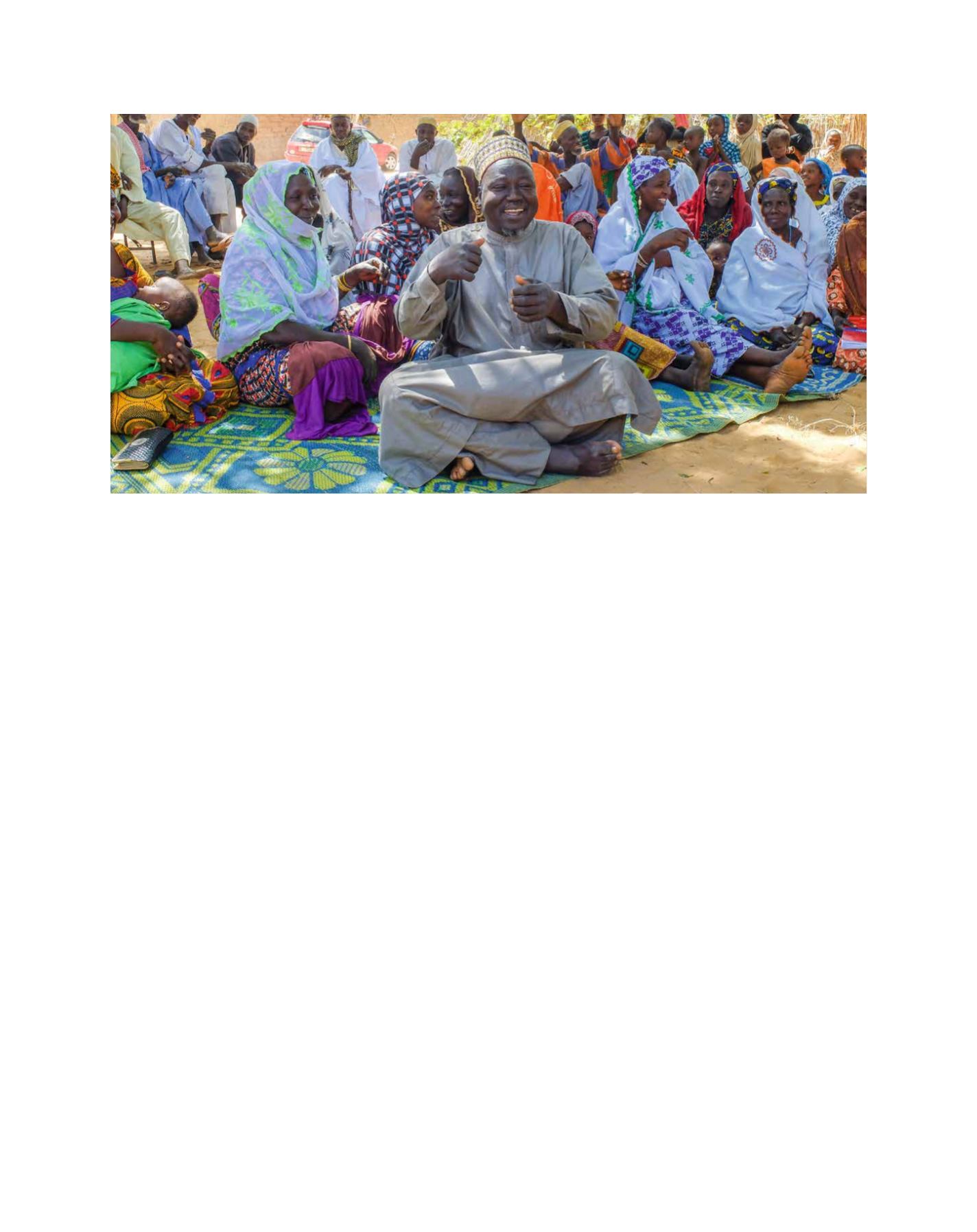

[
] 47
grown fast in sub-Saharan Africa in the last decade, the region
remains with the lowest mobile penetration worldwide.
6
Not
everyone benefits from the dividends of the digital technology
sector. The digital divide exists between (developed/develop-
ing) and within countries (rural/urban) and women often lag
behind men in terms of ownership and use of digital technolo-
gies in all regions of the world.
In sub-Saharan Africa, 64 per cent of women, representing
over 300 million people, do not own a mobile phone. In Niger,
the gender gap in mobile ownership represents 45 per cent.
7
Besides structural impediments that inhibit both women and
men in rural areas from reaping the benefits of using ICTs (costs,
coverage and literacy), gender-specific factors influence women’s
possibilities to access, use and own digital technologies.
In this context, the Food and Agriculture Organization of
the United Nations (FAO) is convinced that increased atten-
tion is needed to reducing the gender gap across all areas of its
work. As declared by FAO Director-General, Mr José Graziano
da Silva, “Women must be seen as equal partners in sustainable
development, because they have as much to give as they need
to receive. In the end, achieving gender equality and empower-
ing women is not only the right thing to do; it is also a crucial
ingredient in the fight against poverty and hunger.”
FAO also considers that for facilitating women’s empower-
ment it is necessary to have the strong engagement of both
men and women. Gender inequalities are structural and deeply
rooted in society. Cultural and behavioural changes are impera-
tive for the transformation of rural societies.
The main question remains: how can this be achieved?
One of the answers provided by FAO is to facilitate
women’s and men’s empowerment through innovative
gender-sensitive approaches in the field of participatory
communication. This is achieved through the Dimitra
Clubs’ approach, which has proved to be extremely effec-
tive in stimulating changes in gender roles and behaviours in
several countries of sub-Saharan Africa in the last 10 years.
The approach has been developed by FAO with the support
of the Belgian Cooperation.
The Dimitra Clubs help their members to strengthen commu-
nity dialogue and social cohesion. They are groups of women,
men and youth –mixed or not –who voluntarily decide to get
organized to identify and discuss their problems, make informed
choices and find solutions they can put into practice themselves,
with their own resources. This process of empowerment trans-
lates into collective action and concrete achievements by the
clubs to bring about changes in their communities.
The Dimitra Clubs are more than a simple participatory
approach: by combining capacity development processes with
the use of ICTs, such as solar-powered radio sets and mobile
phones, phone apps and rural radio stations, this approach
greatly contributes to people’s empowerment, collective action,
gender equality and better livelihoods for all.
The clubs are equipped with wind-up and solar-powered
radios, often paired with mobile phones connected in a fleet.
In this empowering process, community radio stations are
used to relay information requested by the clubs, broadcast
the debates on air and facilitate exchange and networking. It
should be emphasized that rural radio is still today the most
used media tool in Africa,
8
particularly in rural isolated areas
and among rural women.
9
ICTs can pave the way to socioeconomic opportunities for
rural women, such as mobile banking, cash transfers, e-learning
and relevant information on market prices, sustainable agricul-
tural techniques, weather conditions etc. They can be drivers
for rural women to become more informed and active citizens,
engage in income-generating opportunities, raise their voices
and actively participate in decision-making processes. This
results in significant social gains for the whole community.
Image: Niger, Eliane Najros
The dynamic nature of the Dimitra Clubs has stimulated changes in gender roles and behaviours at individual, household and community levels
G
ender
E
quality
and
W
omen
’
s
E
mpowerment
















